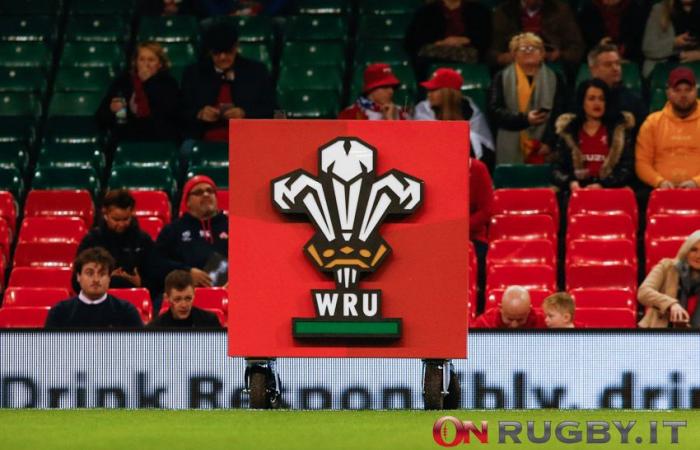The WRU has developed a strategic project to combat the crisis in the professional sector
Wales: five-year plan to try to clear £20m debt – ph. s. pestina
During the 2023 Six Nations, the Wales national rugby team experienced one of the darkest moments in its recent history. The federation’s financial cuts and the threat of strike action by the players had quickly made it clear that the years to come did not bode well.
Just over a year later, the Welsh Rugby Union has formalized a recovery plan which should lead the professional sector towards a more promising future.
“One Wales” is the name of the five-year strategy discussed and approved by the federal government at the Principality Stadium in Cardiff this week.
The figures submitted to the press cover a variety of operational areas, so Welsh Rugby Union Chief Financial Officer Leighton Davies, along with CEO Abi Tierney and Chairman Richard Collier-Keywood, shed some light on the matter.
Read also: Test Match, South Africa beats Wales 41-13 at Twickenham
The £20m debt and the £15m deficit
According to data reported by the WRU, the federation’s current debt amounts to £20 million. A figure that can be frightening, furthermore accentuated by the pandemic, but which is not that unusual for a 100 million pound company, often dealing with investments whose benefits are not immediately tangible.
“The company is in stable condition – explained Leighton Davies – However, we need to earn through debt refinancing and this will help us close the financial gap currently present in the professional sector. Secondly, this is broadly the sum of the debt taken on during the pandemic particularly to ensure support for our regional clubs.”
The federation also spoke of an account deficit of £15 million recorded over the last two years. A number mentioned by President Richard Collier-Keywood, who was keen to clarify how this shortage represents an essential step to guarantee the survival of rugby in Wales, seriously affected by Covid.
“We have been discussing a £15m deficit over the last two years in the WRU’s accounts,” Collier-Keywood said. “This does not mean that a loss of £15 million has been recorded over these two years. The reason we talk about the deficit is to explain that CVC money – which has invested in the Six Nations and URC competitions – has historically covered this deficit. This is important to note because the revenue from this CVC investment will stop in 2026. So, we need to account for this £15m shortfall from this point. The CVC deal is complex but, simply put, the WRU has sold a portion of future revenue from participation in the Six Nations, URC and EPCR. The plan at the time of this deal was to use the money from this sale to invest in future projects which would generate revenue for Welsh rugby.”
Read also: Summer Series: what we will see on TV and streaming of the Summer Test Matches
£29m to restart the professional sector
Although it is a forecast, this is the overall amount needed for the clubs of the 4 regions to face future challenges with more serenity. Money that is missing, but that must be found to keep the system alive.
The £29m (originally theorised at £35m), according to the WRU, is what is needed to facilitate the success of ‘One Wales’. In other words, the figure identifies an estimated gap of £1.45m in annual funding that would need to be in the coffers of each regional club over the next 5 years to achieve the set targets.
The salary cap
From next season all four regions will have to operate the business with a salary cap of £4.5 million. Only two players are allowed outside this limit. The basis for the introduction of the salary cap was the belief that player salaries had spiraled out of control and needed to be lowered for greater sustainability.
“This number is the salary cap for each of the four regional clubs,” Davies said. “The salary cap is agreed at the Professional Rugby Board (PRB), it is a collective agreement between the four regional clubs and the Union. The salary cap idea is to control the player market in Wales and protect against unnecessary inflation, i.e. when two regional clubs find themselves both wanting to recruit the same player and therefore competing for his services. The 25 cap rule, which is intended to dissuade players from moving to other leagues, also helped restore the market.”
The contribution to the regions, respecting their autonomy
Each year the WRU contributes £4.275 million to the regions business in return for their services – in simple terms the supply of Cardiff, Scarlets, Dragons and Ospreys players for national team matches. It is important to note that this is not a budget limit, because the teams are for all intents and purposes private.
Regional clubs can therefore generate additional funds through competitions, commercial activities, sponsorships and other autonomous initiatives.
“It is of course at the discretion of the PRB to increase the salary cap described above if it is possible to generate a sufficiently significant income independently of the £4.275 million allocated funding. This increase in funding is one of the objectives of the One Wales strategy,” Leighton Davies said.
Welsh Government help
The WRU has received £13m in grants from the Welsh Government during Covid, while the federation has said it has already saved £3m in the professional sector.
This money is being saved by introducing a shared services partnership with the four regional clubs in an agreement that is part of the ‘One Wales’ strategy. This is a process that improves annual cost efficiencies and is part of the funding figures disclosed.
“A new Commercial Growth Officer will oversee this shared services work and seek to grow the commercial value of Welsh rugby, to further bridge the economic gap needed to fund it,” concluded Leighton Davies.
onrugby.it © all rights reserved
Dear Readers,
OnRugby has been offering you free, timely, daily information on the world of the oval ball for over 10 years. Our work has a cost that is repaid by advertising, especially personalized advertising.
When you are offered information on the release of cookies or similar technologies, we ask you to support us by giving your consent.






